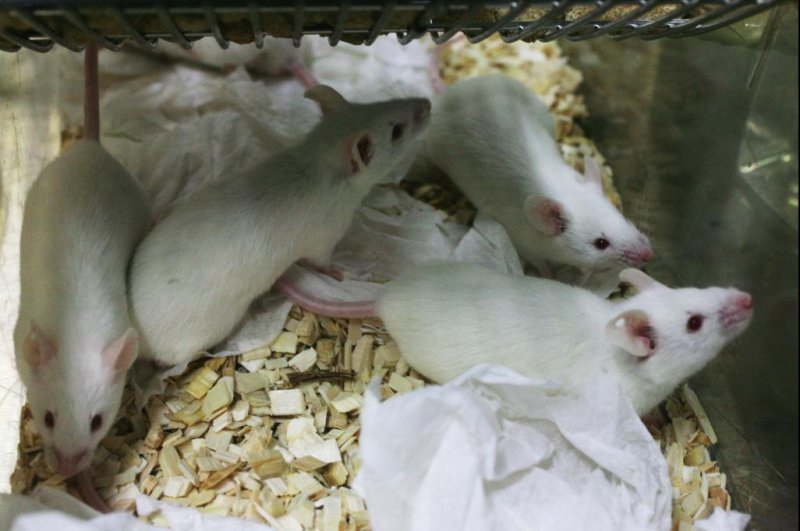Researchers recorded the brain activity of lab mice while they interacted. Photo by Rama/
Wikimedia Commons
June 21 (UPI) -- New research shows the brains of animal pairs synchronize when they socially interact. The breakthrough promises new insights into the intricacies of social relations among animals.
Most of the research into the neural processes underpinning animal behavior have focused on specimens by themselves, but many animals spend most of their waking life interacting with other animals. To better understand how animal brains process social interactions and social hierarchies, scientists attached tiny microscopes to the heads of mice and observed their interactions.
The tiny microscopes used calcium imaging to record the activity of hundreds of brain cells. Scientists observed the mice interacting freely on open terrain, as well as inside tubes.
Tube interactions reveal social hierarchies among the mice, as dominant mice will claim a greater percentage of the territory within the tube. Sometimes, dominant mice push subordinate mice out the tube entirely.
Scientists observed a synchronicity among the brain signals of interacting mice -- the stronger or more intense the engagement, the more synchronized the signals. Researchers were able to observe synchronicity among individual cells, as well as groups of cells. Some of the synchronized brain cell activity corresponded to the actions of the individual, while other synchronized patterns corresponded to the actions of the other mouse.
"The synchronized activity not only arose during various types of social behavior, but also the level of synchronization actually predicted how much the animals would interact," researchers wrote in a news release.
When researchers studied the synchronized patterns of mice interacting in tubes, they found the synchronicity was dictated by the brain activity of the dominant mouse.
"As interbrain coupling has only previously been observed in humans and non-human primates, this finding strongly suggests generality and conservation of the phenomenon across a wide range of animal species," researchers wrote in their paper, published this week in the journal Cell.
In addition to opening up a new way to observe social interactions among animals, researchers suggest their findings could help scientists better understand psychiatric and developmental disorders in humans, including autism spectrum disorder and other conditions characterized by diminished social intelligence.















